TV diagonal
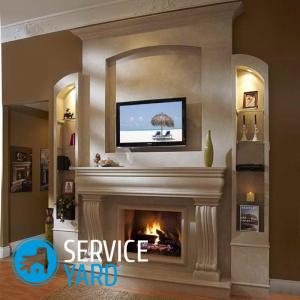
It is impossible to imagine a modern house, apartment without a TV with an impressive diagonal size. But at the time of purchase, or better, before making it, you need to decide for yourself what kind of TV diagonal you need. What technologies and features should be present in your home appliances? With all these questions, we will help you figure it out.
to contents ↑TV diagonal - which is better?
There is simply no consensus on which diagonal of the TV screen is better. When choosing household appliances with certain parameters, you must take into account your own preferences, the area of the room in which your new TV will be located.
Important! The smallest distance from which you can watch TV shows is approximately 1.5 meters. And given the size of the installation room, it turns out that for each specific buyer there is an ideal TV diagonal.
Your individual characteristics play a significant role, namely: visual acuity, as well as your own perception of the image. It is also necessary to take into account that the eyes get tired both with the big screen, if the image quality is lost, and with small ones, provided that the distance is too large. Therefore, everything should be proportionate.
to contents ↑How to choose the right diagonal?
We omit those cases when there is practically no choice due to severe financial restrictions or if a place of a certain size has been prepared in advance for the equipment. In order to calculate the required distance for viewing the image, we will provide calculation formulas by which you can easily calculate the correct distance for viewing.
For image format DVD-720x576
In this case, do this calculation: multiply the diagonal of the TV screen in centimeters by 4.15.
This will be the distance from which you can watch programs on technology with such image quality.
Important! To convert inches to centimeters, multiply inches by 2.54. Distance values for popular models:
- 1.5-2 m - for 19 ″;
- 2.4-3.4 m - for 32 ″;
- 3-4.2 m - for an indicator of 40 ″.
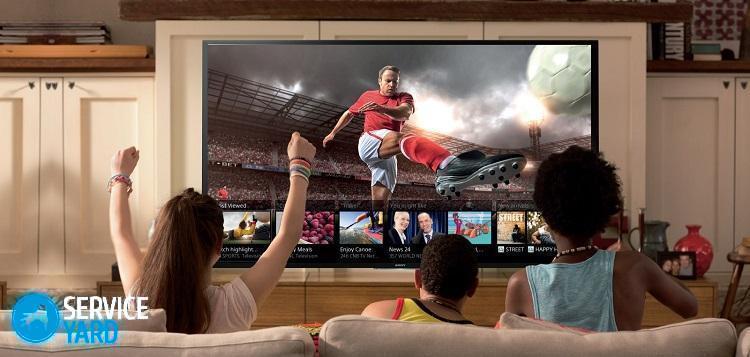
For image format HD-1280x720
In this case, the following formula is used: the TV diagonal in centimeters is multiplied by 2.35.
Important! The average values for the most popular models are:
- 1.13 m - for 19 ″;
- 1.9 m - for 32 ″;
- 2.38 m - for 40 ″.
For image format Full HD-1920x1080
The calculation formula for such a screen looks like this: the TV diagonal in centimeters times 1.56. In general, it is enough to allocate a minimum of 0.87 m when setting the screen to 19 ″, 1.27 m for the 32 inch panel, 1.59 m for the 40 inch screen.
to contents ↑Important! In addition to the size of the image panel, it is necessary to take into account the quality of the signal that the provider will send, as well as the resolution of the picture. The higher the indicator, the closer you can view the transmission without compromising image quality. And vice versa.
Dependence of viewing angle and screen size
Such great attention is paid to the diagonal of the TV, its resolution, as well as the viewing distance because these parameters very much affect the effect of the presence of the viewer.
This effect affects how much you are immersed in everything that happens on the screen.Here peripheral vision also has its value, the work of which directly depends on the angle at which you look at the image.
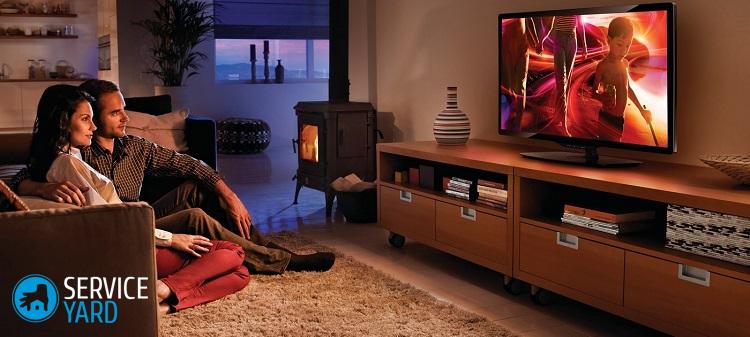
The correct viewing angle
Different sources recommend different viewing angles of the video on the screen for greater immersion in the reality of cinema.
For HDTV models, there is a recommendation for viewing angles, which indicate three values:
- 20 ° - at this viewing angle, the distance is equal to the diagonal x 2.5.
- 30 ° - at this angle the distance is equal to the diagonal x 1.6. This viewing angle is especially popular for home theaters.
- 40 °. TXN recommends choosing a distance that is equal to the diagonal x 1.2. This is the minimum viewing distance for Full HD TVs.
Important! When buying household appliances for classic use, and not for a home theater system, you must consider, in addition to the immersion effect, other features. They are associated with restrictions when installing a television receiver. That is why the optimal distance, as well as the diagonal of the TV, is associated with other values.
The right choice by location
Depending on whether you decide to buy a TV for a bedroom, living room, kitchen or other room, the preferred diagonal will also change. For example:
- if you decide to place the equipment in the kitchen in the middle of the wall or on the bar, a small screen will be preferable - about 19-22 inches;
- For a spacious living room, a widescreen model from 40 to 75 inches is suitable, so that from every corner of the room, each family member or guest can enjoy viewing a high-quality picture.
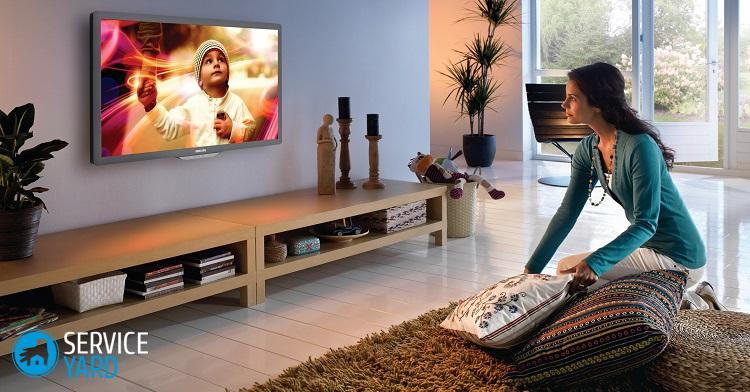
Tips for choosing a TV
To understand not only what diagonal of the TV you need, but also in general with the functionality of the equipment, we suggest taking into account such factors in the buying process.
Choose your screen size
The diagonal of the screen directly depends on the size of the room in your house where the TV will stand.
There are unspoken rules, such as: the distance to the screen is equal to three panel diagonals. But you just shouldn’t follow it, since each person has his own angle of view, as well as his perception of the film image.
The most effective way to check your individual angle of view is to ask your friends for a projector and experiment. Change the focal length of the projector lens by comparing picture quality.
Important! Remember that there is a minimum acceptable diagonal size limit for a home theater. This border lies in the region of 26-27 inches, because starting with these diagonals, matrices that support HD - high clear image begin.
Choose the technology that suits you
It is extremely important to choose the technology of your future TV precisely because any of them has its advantages and disadvantages. Here is a short list of technologies that are used in the assembly of models of the modern generation.
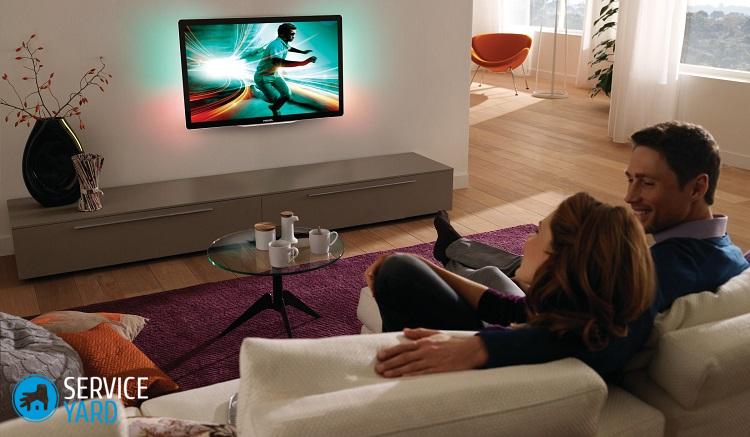
CRT or CRT
This is the oldest of the existing ones. In fact, this is a simple, familiar to us, TV:
- The definite advantages of this technology are its stable long-term performance; on the TV diagonals up to 30 inches, a pretty good picture.
- Cons - there is no support for HDTV, large dimensions of equipment and weight.
LCD or LCD
A fairly young technology that has such features:
- Pros - a flat panel, support for high definition images, the dimensions of the HD matrix can be small diagonals, even up to 19 inches.
- Cons - a fairly low response speed, as well as a limited viewing angle. But these disadvantages are no longer a “disease” for this technology, although the picture on the LCD TV is still different. It differs in a small contrast, as well as the rigidity of the picture.
Plasma
In England it is called PDP. This is the very first flat panel technology. What can you count on when buying such equipment:
- Pros - no other technology, so far, provides such a large and tangible image contrast as a plasma panel. It gives the picture a natural image, color brightness, as well as soft sound.
- Cons - manufacturers have long and fairly successfully struggled to extend the shelf life of the plasma panel and burnout of individual sections. Another disadvantage of the plasma panel is that the TV diagonal of less than 50 inches cannot support Full HD images.
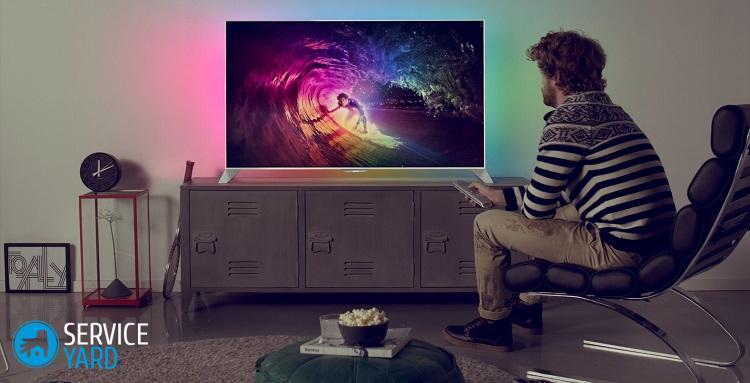
Projection technology
This type of equipment is divided into 3 main groups: LCD, DLP, D-ILA. Here is a general description of their properties:
- Pros - soft picture, high definition, brightness, contrast.
- There is one minus, but still it is a minus - one viewing angle, the vertical is extremely limited.
Other TV options
In addition to the main type and type of matrix or device, the manufacturer includes additional names in the characteristics of its products. What can they tell you about?
Active Crystal Color (Samsung)
Samsung TVs and monitors use Active Crystal Color technology. This technology is designed to improve the quality of the image on the device screen by optimizing various algorithms for the system.
So far, this technology is used only in televisions that have quantum dot displays, as well as monitors with screens that are made using VA technology.
The quality of the transmitted color in the image depends on the quality of the TV screen, and after that - on software and processing algorithms.
Important! Considering the fact that this technology is mainly used on monitors with a new matrix, it can be assumed that such a name pursues the marketing task of attracting and drawing the attention of the buyer to the details in the description of a particular device.
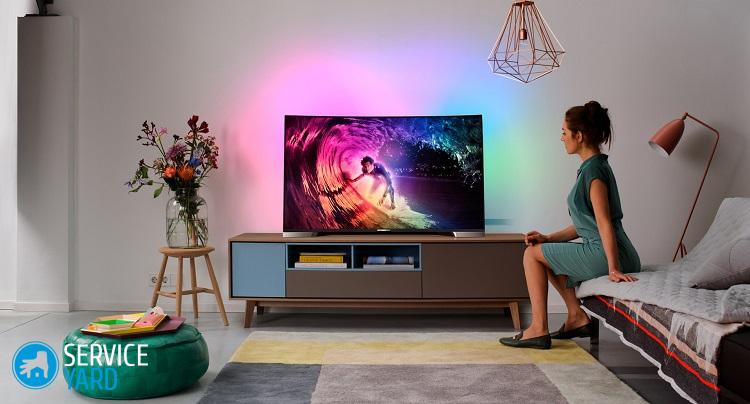
What is Ultra Color Spectrum ™ on Vizio TVs?
Vizio TVs are mainly sold in the USA. Premium TVs support the latest Ultra Color Spectrum ™ technology, which is designed to optimize the tint palette and screen contrast.
Its presence in this TV depends only on the quality of the screen panel, since the TV processor processes the received digital images in exactly the same way.
Important! Regardless of the model and diagonal of the TV, it is possible to achieve a qualitative change in the image only if you improve the screen.
Televisions featuring Ultra Color Spectrum technology use only enhanced screens. The effectiveness mainly affected only the presence of local dimming, since the backlight LEDs are divided into certain zones. This allows you to automatically turn off the backlight in dark scenes.
to contents ↑Stock footage
Now you have a little idea of what the diagonals of TVs can be.
- How to choose a vacuum cleaner taking into account the characteristics of the house and coatings?
- What to look for when choosing a water delivery
- How to quickly create comfort at home - tips for housewives
- How to choose the perfect TV - useful tips
- What to look for when choosing blinds
- What should be running shoes?
- What useful things can you buy in a hardware store
- Iphone 11 pro max review
- Than iPhone is better than Android smartphones



